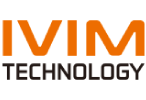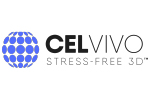Agilent provides xCELLigence impedance-based, label-free, real time cell analysis system and NovoCyte flow cytometers.
Automated microscopy and Spatial Proteomics
Automated microscopy and image analysis
Discover
Related topics
Study finds that automated liquid-handling operations are more robust, resilient, and efficient!

Jul 18, 2024
Liquid handling devices (LHD) improve lab efficiency and accuracy. They automate liquid transfers, increase experiment...
Scaling Whole-Genome Sequencing to >50,000 single cells using cellenONE

Jul 16, 2024
cellenONE technology enabled the creation of tens of thousands of high-quality single-cell genomes, paving the way for...
Theranostics: From Mice to Men and Back

Jun 25, 2024
Recorded webinar
Presenters: Prof. Dr. Ken Herrmann and Prof. Dr. Katharina Lückerath – Moderator: Hannah Notebaert
Automated Purification of Viral DNA and RNA from Biological Samples usingZymo Research Quick-DNA/RNA

Jun 14, 2024
The Quick DNA/RNA Viral MagBead Kit from Zymo has been automated with the Cybio FeliX pipetting robot from Analytik...
DNA Amplicon Library Preparation for Illumina® Sequencing

Jun 12, 2024
The precision of temperature control, efficient heating and cooling rates, and excellent temperature homogeneity across...
X-RAD 320 for irradiation therapy during quantifying study for in vivo collagen reorganization

Jun 5, 2024
Quantifying in vivo collagen reorganization during immunotherapy in murine melanoma with second harmonic generation...
High-frequency Ultrasound System For Preclinical Imaging

May 13, 2024
The Prospect T1 is an innovative high-frequency ultrasound system designed specifically for in vivo preclinical imaging...
April 2024 publication revealing benefits of using intravital microscopy in trascriptomics studies

May 7, 2024
Transcriptional activation of Bmal1 drives the inflammatory activity of monocytes by modulating mitochondrial unfolded...
Omics Studies of Tumor Cells under Microgravity Conditions

May 6, 2024
It is important for the analysis of data from space experiments to distinguish unspecific stress reactions from...
Column-Free CD14+ Monocyte Isolation using 50nm Superparamagentic Beads on MARS® Bar

Apr 25, 2024
The MARS® Bar Magnetic Separation Platform is a closed and automated isolation for cell therapy development and...

May 31, 2017
Mycoviruses are usually transmitted horizontally via hyphal anastomosis and vertically via sexual/asexual spores. Previously, we reported that a gemycircularvirus, Sclerotinia sclerotiorum hypovirulence-associated DNA virus 1 (SsHADV-1), could infect its fungal host extracellularly. Here, we discovered that SsHADV-1 could infect a mycophagous insect, Lycoriella ingenua, and use it as a transmission vector. Virus acquired by larvae feeding on colonies of a virus-infected strain of S. sclerotiorum was replicated and retained in larvae, pupae, adults, and eggs. Virus could be transmitted to insect offspring when larvae were injected with virus particles and allowed to feed on a nonhost fungus. Virus replication in insect cells was further confirmed by inoculating Spodoptera frugiperda cells with virus particles and analyzing with RT-PCR, Northern blot, immunofluorescence, and flow cytometry assays. Immunofluorescence reaction was observed under a confocal microscope, and infection rates of cells were counted by NovoCyte flow cytometer. Larvae could transmit virus once they acquired virus by feeding on virus-infected fungal colony. Offspring larvae hatched from viruliferous eggs were virus carriers and could also successfully transmit virus. Virus transmission between insect and fungus also occurred on rapeseed plants. Virus-infected isolates produced less repellent volatile substances to attract adults of L. ingenua. Furthermore, L. ingenua was easily observed on Sclerotinia lesions in rapeseed fields, and viruliferous adults were captured from fields either sprayed with a virus-infected fungal strain or nonsprayed. Our findings may facilitate the exploration of mycoviruses for control of fungal diseases and enhance our understanding of the ecology of SsHADV-1 and other newly emerging SsHADV-1–like viruses, which were recently found to be widespread in various niches including human HIV-infected blood, human and animal feces, insects, plants, and even sewage.
Related technologies: Conventional flow cytometry
Brand profile
Agilent provides xCELLigence impedance-based, label-free, real time cell analysis system and NovoCyte flow cytometers.
More info at:
www.aceabio.com